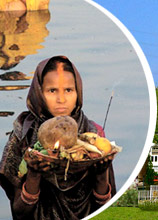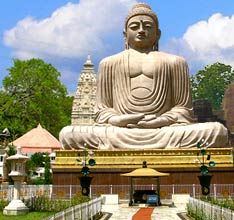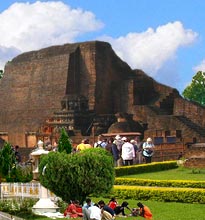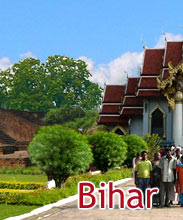Mughal rule in India has influenced the social, cultural, political and economic life style of Indian people. But the area which mostly influenced was art, architecture and culture. As far as painting is concerned Jahangirís reign was known as the golden era of Mughal paintings. Combining the Persian style with the Indian traditional style they introduced a new way of painting. Many Indian schools of paintings were flourished afterwards and they were heavily influenced by Mughal paintings. One among these was Patna School of Painting or Patna Kalam or Company painting. As we go back to history Patna Kalam was an offshoot of Mughal painting flourished during early 18th to mid 20th century in Bihar.
During the rule of Aurangzeb Hindu artisans of Mughal painting faced prosecution because of his anti-Hindu policy and distaste in art and painting. Thus these Hindu painters took refuge in Patna and introduced a new school of painting known as Patna Kalam. Although they followed the basic features of Mughal painting their subject matter was different. Unlike Mughal painting whose subjects were mainly royalty and court scenes, painters of Patna Kalam were deeply influenced by daily life of common people. Their main subjects were bazaar scenes, local rulers, local festival and ceremonies. Some famous painters of Patna kalam were Sewak Ram, Hulas Lall, Shiv Lal, Shiva Dayal, Mahadeo Lal and Ishwari Prasad Verma.
The painters of the Patna kalam used to extract colours indigenously from plants, barks, flowers and metals. Generally they painted on glass, mica and ivory sheets. The principal centres were Patna, Danapur and Arrah. These paintings are characterized by light colored sketches and life-like representations. One of the important characteristic of Patna Kalam is that usually they do not paint any landscape, foreground or background. Another unique feature of the Patna School of Painting was the development in the shading of solid forms.
These paintings are painted straightway with the brush without using the pencil to delineate the contours of the picture. This technique was commonly known as 'Kajli Seahi. The features of the figures of these paintings are characterized by the pointed noses, heavy eyebrows, lean and gaunt faces, sunken and deep-set staring eyes and big moustaches. The Patna School of Painting is facing a gradual decline and becoming a matter of past with the lapse of time as new faces are not coming forward to carry on this ancient tradition and the old ones are passing away one by one.










